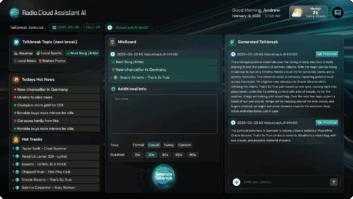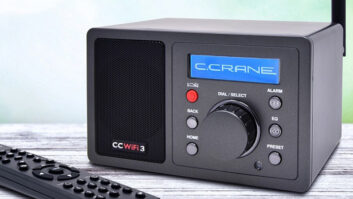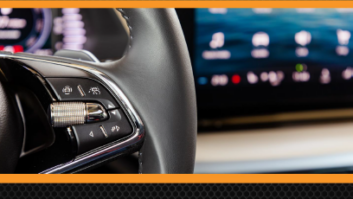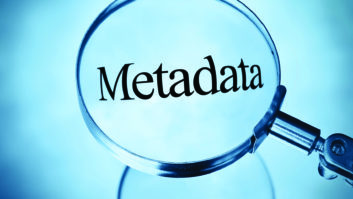
The author is senior vice president, Connected Radio for Xperi.
Not long ago, Gene “Bean” Baxter said goodbye to KROQ(FM)’s “The Kevin & Bean Show” after 30 years on the station’s signature morning drive-time show. He left behind a legacy that stretched across generations of listeners and traveled far beyond the Los Angeles basin. It’s fair to claim, in fact, that the “World Famous KROQ” lived up to its tagline in part due to the magic of shows like this one.
It also raises two very good observations about the power of radio: that there’s something tangibly personal and rich about the broadcasting, and that as the world grows smaller — radio becomes more inclusive and empowering.
After all, one doesn’t have to be from Los Angeles to appreciate Kevin & Bean. The value and the significance of the content produced travels far beyond one spot on the map. In fact, it’s possible that the power of radio — personal and real entertainment – has never been greater. That’s good news for everyone who values access to rich content — and the ability to choose what they’d like to consume.
ENTERTAINMENT OPTIONS ARE ENDLESS
Creating choices for entertainment is perhaps greatest inside your vehicle. Inside the cabin of today’s newer cars is a plethora of options, all of them good. You can connect your personal device via Apple CarPlay or Android Auto; there are satellite networks that deliver programming in hundreds of different ways and categories. On-board apps abound, full of playlists that continuously pump the music at you 24/7.

Then there’s radio. And it’s a stronger option today than ever before, thanks to the widespread adoption of HD Radio and the emergence of hybrid radio.
Our version of hybrid radio is DTS Connected Radio, which combines over-the-air broadcasting (analog, HD Radio and DAB+) and corresponding metadata (via IP) on a global scale. This convergence creates three very important benefits:
Deeper and more fulfilling content for users: The combination of data with broadcast enhances the discovery of quality programming. In fact, one of the challenges around broadcast radio going digital is choice — especially in North America with HD Radio, where multi-casting has expanded the number of sources by over 2,000 stations. In addition, today’s modern digital platforms give users the ability to search via many different ways, including voice activation. Hybrid radio also provides that level of enhanced discoverability. There’s a rich visual interface so you can search for content, and the availability of information for all radio stations in a market in under one second. It combines the search-and-sort value of online experiences with higher quality radio programming available in the user’s market.
Affordable change at a global scale for automakers: There’s no mistake that the car dash is changing, getting more complex and more expensive. There’s increased connectivity and hardware, along with new regulations in Europe — and probably soon in North America — that require a module that’s basically a cellular modem in the car for emergency response. Hybrid radio leverages what automakers already are legally required to have as a part of their vehicle technology offerings. The only service that that can deliver that level of affordable infotainment inside a vehicle is radio. Automakers have already made an investment in the digital tuner; they’re now also required, in certain markets, to add a connectivity module for regulatory purposes, and emergency response. Hybrid radio brings these two components together, leverages the investment and creates enhanced radio — the only truly free medium. Automakers can now deploy an enhanced content platform through investments that they’ve already made — with broadcasters who are already on board. It’s affordable, rich content on a global scale, a single radio platform that delivers a consistent and enhanced user experience across analog, HD Radio, or DAB+ radio.
[DTS Promotes “Connected Radio” Project]
Sharper listener insights for broadcasters: The value of metadata doesn’t stop at the album name. Indeed, the real value is in user listening habits. For DTS Connected Radio, once the car is turned on the radio immediately connects to our service. Let’s say a session starts with a vehicle in Los Angeles. We know the radio station, and how long they listen before jumping to another station or service. All the while, we’re sending data to the user, creating a two-way feedback flow that we measure and send back to the station. The radio station can learn why they tuned in, and what made them leave. Did they tune to another radio station? Shut off the car, or did they drive out of coverage? How long did they listen? Ultimately, that’s all available audience flow data over time. Hybrid radio — at least DTS Connected Radio — is able to provide a measurement of their total audience and how that audience flows in and out of their station throughout the day.
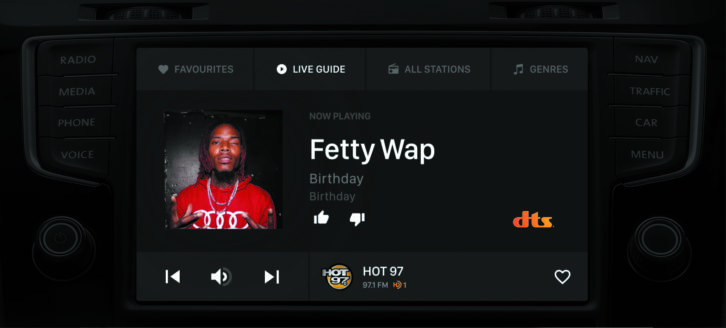
Overall, DTS Connected Radio enables automakers to create a common experience across analog and digital broadcasting. It pairs broadcast programming with IP-delivered content, all from the vehicle’s IP connection. The combination of analog programming and its corresponding metadata creates a richer, more valuable content experience — and one that’s affordable at a global scale for automakers.
There’s a very real quality to the content that radio brings to listeners. Globally and regionally, it’s a vital part of how we enjoy life and expand our own personal horizons. Radio is unique in that way. As it moves forward toward a hybrid system of digital information and broadcast programming, it is evolving into a scalable format that brings the best of those real moments to an on-demand and two-way system of information sharing — done across a digital, affordable and global platform.
Comment on this or any article. Email [email protected] with “Letter to the Editor” in the subject field.
